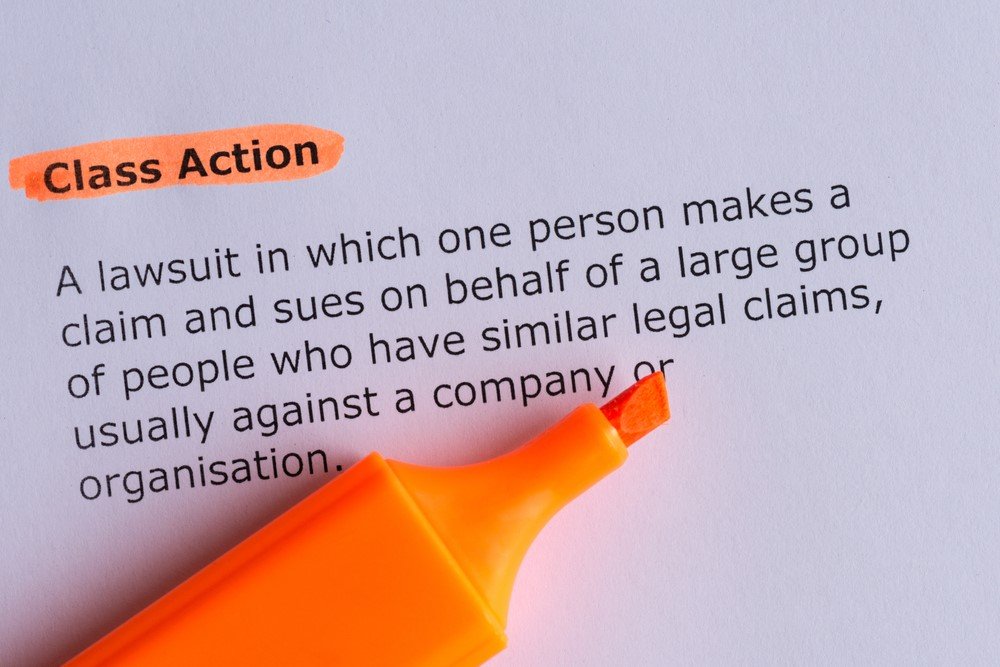Justice for All: The Duty of Class Action Lawsuits in Shielding Customers
Recognizing Course Action Suit: A Guide for Attorney
Course action suits have become an important component of the lawful landscape, permitting the combination of multiple cases into a solitary activity. For legal representatives, understanding the ins and outs of class action litigation is critical in properly representing their customers. This extensive guide checks out the basics of class activity claims, from determining potential class members to browsing the accreditation process. Furthermore, it explores key strategies for taking care of course activity litigation and provides understandings into acquiring and working out authorization for settlements. By diving right into the details of course action legal actions, this guide furnishes attorneys with the knowledge and devices needed to effectively browse this complicated location of legislation.
The Essentials of Course Activity Suits
Class activity legal actions are a legal system used to settle similar cases from a team of individuals into a solitary legal action, offering a economical and effective method to looking for justice and resolution. This kind of legal action allows a representative plaintiff, acting upon part of the whole class, to bring a claim versus an accused who has actually supposedly created damage or went against the rights of multiple individuals.
The basic needs for bringing a course activity lawsuit consist of numerosity, commonness, typicality, and competence of representation. Numerosity refers to the fact that the class should be so large that joinder of all participants would be impractical.
Course action suits can be useful for both accuseds and complainants. For plaintiffs, it allows them to merge their resources and share the threats and expenses related to lawsuits. It also provides a degree playing area when they are up against huge companies or entities. For accuseds, it supplies the chance to efficiently resolve numerous insurance claims in a solitary suit, staying clear of the requirement to prevent various specific suits.
Identifying and Assessing Potential Class Members
After developing the standard demands for a course action suit, the next action is to recognize and analyze prospective class participants. If they satisfy the essential standards., this procedure involves determining who might be component of the class and examining their cases to establish.
To identify potential class members, lawyers commonly perform comprehensive research study and gather appropriate information. This may include examining papers, carrying out interviews, and taking a look at documents to recognize people or entities that might have been impacted by the supposed wrongdoing. It is critical to develop a clear and comprehensive checklist of potential course participants to guarantee that all affected parties are consisted of in the suit.
As soon as prospective class participants have been identified, the following step is to assess their cases. If they meet the lawful needs for class qualification, this includes reviewing the advantages of each individual insurance claim to determine. Attorneys must thoroughly analyze the truths, proof, and legal concepts of each possible class participant's case to make certain that they have a sensible case.
Assessing prospective course members likewise entails identifying whether they fulfill the class definition and have actually endured comparable harm as a result of the accused's activities. This requires comparing the truths and scenarios of each possible course member's situation to the allegations and legal concepts put forth in the legal action.
Browsing the Course Accreditation Refine
To successfully browse the class qualification process, attorneys have to carefully stick to the step-by-step needs stated by the court. Course certification is a critical action in a course activity suit, as it identifies whether a situation can continue as a course action, standing for a group of people that have comparable cases against a defendant. The process involves satisfying specific resource criteria, such as numerosity, commonality, typicality, and adequacy of representation.
Firstly, attorneys should develop numerosity by showing that the class is so huge that private joinder is unwise. This requires a thorough analysis of the claims and defenses included.
Next, lawyers have to show typicality, which suggests that the depictive complainant's insurance claims are typical of the cases of the class participants. This makes sure that the interests of the depictive plaintiff line up with the interests of the course. Legal representatives should show competence of representation, indicating that the depictive plaintiff and their advise will rather and adequately represent the rate of interests of the course.
To navigate this procedure efficiently, lawyers need to thoroughly prepare by carrying out extensive study, collecting evidence, and developing a compelling argument that satisfies each of these requirements. They need to additionally be prepared to respond to any type of obstacles or objections increased by the offender. By diligently sticking to the step-by-step needs stated by the court, attorneys can enhance their opportunities of obtaining class accreditation and progressing the rate of interests of the course members.

Trick Techniques for Taking Care Of Class Activity Litigation
Upon efficiently browsing the class accreditation procedure, attorneys have to then carry out key techniques for properly handling course activity litigation. These techniques are critical to make sure that discover here the case proceeds smoothly and effectively, inevitably making the most of the possibilities of a beneficial result for the class participants.
One key approach is to develop a strong and cohesive lawful group (Class action lawsuit). This entails assembling a group of attorneys with competence in class action lawsuits, as well as various other appropriate locations such as the certain market or subject issue entailed in the instance. A well-rounded group can bring various point of views and skills to the table, improving the overall performance of the lawsuits
An additional essential approach is to create a well-balanced and thorough lawsuits strategy. This strategy should outline the overall purposes of the instance, in addition to the specific legal concepts and disagreements that will be pursued. It should likewise include a timeline and budget to ensure that the instance remains on track and within the designated resources.
Additionally, lawyers need to actively engage with the course members throughout the lawsuits process (Class action lawsuit). This includes giving routine updates on the progress of the situation, seeking input and feedback from the class members, and resolving any type of questions or issues they might have. By fostering open communication you can try these out and collaboration, legal representatives can develop trust and support among the class participants, which can be critical in achieving an effective resolution
Resolving Class Action Suits: Settlement and Approval
When it involves working out class activity suits, reliable negotiation and obtaining approval are essential actions in accomplishing a resolution. Class activity lawsuits are complex and entail a a great deal of complainants, making it essential to reach a settlement that is fair and satisfactory to all events entailed.

As soon as a negotiation arrangement is gotten to, it should be accepted by the court. The court's duty in this process is to ensure that the settlement is fair, sensible, and adequately safeguards the interests of the class members. The court will consider elements such as the nature of the insurance claims, the stamina of the evidence, the potential recovery for the class participants, and any objections increased by course participants.
Obtaining court authorization is critical as it supplies finality to the negotiation and safeguards the interests of the class members. It makes sure that the settlement is binding and enforceable, and class participants can get their rightful compensation.
Conclusion

Course activity suits have actually become an essential component of the lawful landscape, permitting for the consolidation of several cases into a single action. Class accreditation is a vital action in a class activity lawsuit, as it identifies whether a situation can continue as a class activity, standing for a team of individuals who have similar claims versus an accused. By diligently sticking to the procedural requirements set forth by the court, legal representatives can enhance their opportunities of acquiring course qualification and progressing the rate of interests of the class participants.
The court will certainly consider factors such as the nature of the insurance claims, the strength of the evidence, the potential recuperation for the course members, and any arguments increased by class members.
By identifying and evaluating prospective class members, attorneys can identify the stability of a class action suit.